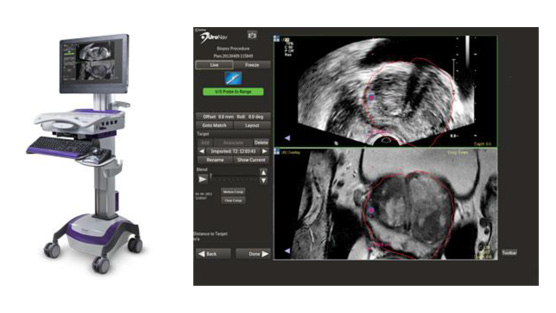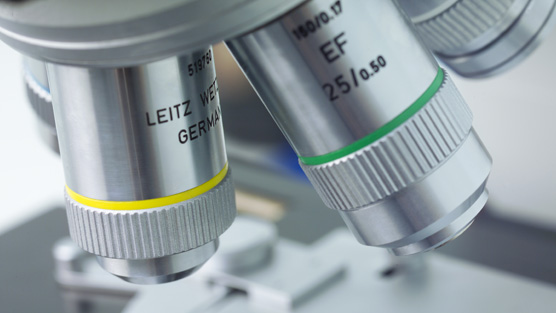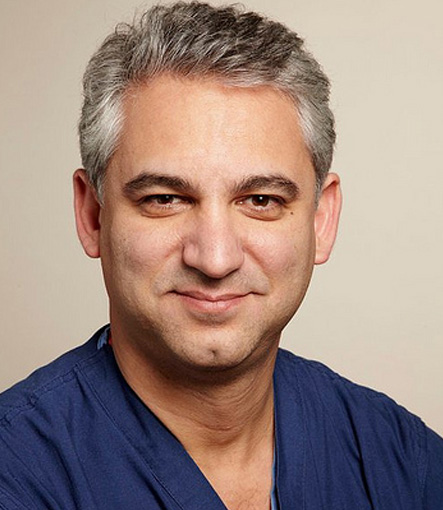NEW YORK, NY – (PR Web – February 18, 2015) – Robotic Prostate Surgeon and New York Urologist, Dr. David Samadi, evaluates MRI Guided Biopsy as a more effective method for detecting and diagnosing high risk and aggressive prostate cancers.

“MRI Guided Fusion Biopsy could be a game changer in the field of urology and prostate cancer. The fusion of MR/Ultrasound and Standard Biopsy is more targeted than a sole random biopsy and results in less false negatives,” said Dr. David Samadi.
Dr. David Samadi’s Prostate Cancer Center at Lenox Hill Hospital is the only center using the revolutionary UroNav MR/Ultrasound Fusion Biopsy System for guidance of targeted prostate biopsy for cancer screening in New York City. UroNav is a high tech MRI system that fuses pre-biopsy MR images of the prostate with ultrasound-guided biopsy images in real time.
“The technology is not 100%, but this formulation of testing may be the magic mix we need to fully understand and effectively diagnose aggressive prostate cancer. For men on active surveillance or watchful waiting, targeted fusion biopsy plays a role as a way to follow up any change in their clinical status and need for further intervention. “We can detect low risk prostate cancer and from there, determine if the patient is a good candidate for definitive treatments and close surveillance,” states Dr. David Samadi, Chairman of Urology.
An MRI-ultrasound fusion biopsy involves taking an MRI and then fusing the data with real-time ultrasound images for guidance on biopsy procedures. The UroNav System combines electromagnetic tracking and navigation with an onboard computer and a real-time imaging interface in one mobile workstation. As seen in the image, MR/Ultrasound fusion aligns and registers prior diagnostic MR images (bottom) with real-time ultrasound images (top). The red outline displays the segmented prostate anatomy from the MR exam and blue/red “targets’ indicate the location of the MR suspicious lesions on the prostate.
Dr. David Samadi believes that MRI fusion biopsy has a clear role for evaluation of cancers in the anterior as well as apex areas of the prostate gland, an area not adequately sampled by a standard 12-core biopsy.
In men with increasing PSA levels, targeted fusion biopsies result in clinical advantages when it comes to deciding how to biopsy, screen and treat patients. By targeting the most suspicious area of the prostate, it’s less likely to miss a significant cancer, which over time can reduce the need for repeat biopsies.
“The advantage is that this technique can be done in the office, and is convenient. If you have a high volume prostate, with hard to reach lesions, as a follow-up it can be helpful. Limitations include cost of the technology and a learning curve for urologists who have traditionally used random biopsy to diagnose,” added Dr. David Samadi.
For too long, there has been a concern that low-risk prostate cancers are overdiagnosed and overtreated, even when they are unlikely to be terminal. The traditional standard biopsy is random and hasn’t proven to be completely reliable. “If you can distinguish who the true low risk patients are, find lesions that we may not be able to see on ultrasound, and decide what to do with them – that would be a major benefit to using MRI, as well as evaluating the anterior aspect of the prostate which we have difficulty evaluating. Targeted fusion biopsies reduce the prospect of finding indolent or clinically insignificant cancers, which helps in lowering overtreatment and overdiagnosis,” said Dr. David Samadi.
In a new study from the National Cancer Institute, 1003 men with elevated PSA levels studied over a seven year period, underwent a targeted and standard biopsy. Targeted MR/Ultrasound fusion biopsy diagnosed 461 prostate cancer cases and standard biopsy in 690 men. The targeted biopsy diagnosed 30% more high risk cancers versus standard biopsy. The result showed an increased detection of high-risk prostate cancer and decreased detection of low-risk prostate cancer. In addition 17 percent fewer low-risk cancers were diagnosed.This study concludes the fusion of MR/Guided and Standard Biopsy can diagnose intermediate- to high-risk prostate cancer.
Dr. David Samadi expresses in the past prostate cancer wasn’t always diagnosed using advanced imaging but believes targeted MR/Ultrasound biopsy is poised to become the new standard in prostate care. “For prostate biopsies, the technology hasn’t changed since the 1980s. Conventional techniques like a random biopsy only examine the lower area of the prostate. But many cancers we find are in locations outside of that zone,” said Dr. David Samadi.
“The main advantage is we can see the entire gland. In a targeted biopsy, MRIs of the suspected cancer fused with real-time ultrasound images create a map of the prostate that enables both urologists and radiologists to pinpoint and test suspicious areas of the prostate region,” notes Dr. David Samadi. “This close collaboration coupled with the targeted MR/Ultrasound biopsy creates a stronger foundation and starting point for the diagnosis process.”
In another study out of North Shore LIJ Urology Center, researchers tested men with elevated PSA levels using the UroNav MR/Ultrasound Fusion Biopsy System along with TRUS (transrectal ultrasound). The results found a higher prostate cancer detection rate compared to data from other studies testing men with elevated PSA levels using a standard 12-core biopsy. Of the prostate cancers diagnosed, 77% were clinically significant using a targeted fusion biopsy.
The combination of UroNav with DynaCAD for Prostate, a powerful MR image analysis system, creates a comprehensive, next-generation MR ultrasound solution for the detection and biopsy of suspicious prostate lesions. DynaCAD for Prostate provides the diagnostic MR information needed for the fusion biopsy by automatically transferring the relevant prostate images and lesion location data over for lesion identification and guidance during the TRUS biopsy procedure. DynaCAD specifically measures morphologic, diffusion/perfusion, and metabolic changes associated aggressive prostate cancers.
Nearly 1 in 7 men will be diagnosed with prostate cancer in 2015 making that a total of about 220,800 cases. Prostate cancer causes nearly 30,000 deaths every year, making it the second leading cancer killer in men next to lung cancer. Dr. David Samadi wants to ensure there is widespread knowledge of prostate cancer being highly curable with a 94 percent 15-year relative survival rate, if detected early.
“Looking toward the future, MRI fusion-guided biopsy will continue to improve and ensure extreme accuracy during the prostate cancer diagnosis process. This directly affects how we proceed to treat the disease, especially when it comes to aggressive prostate cancers.”





